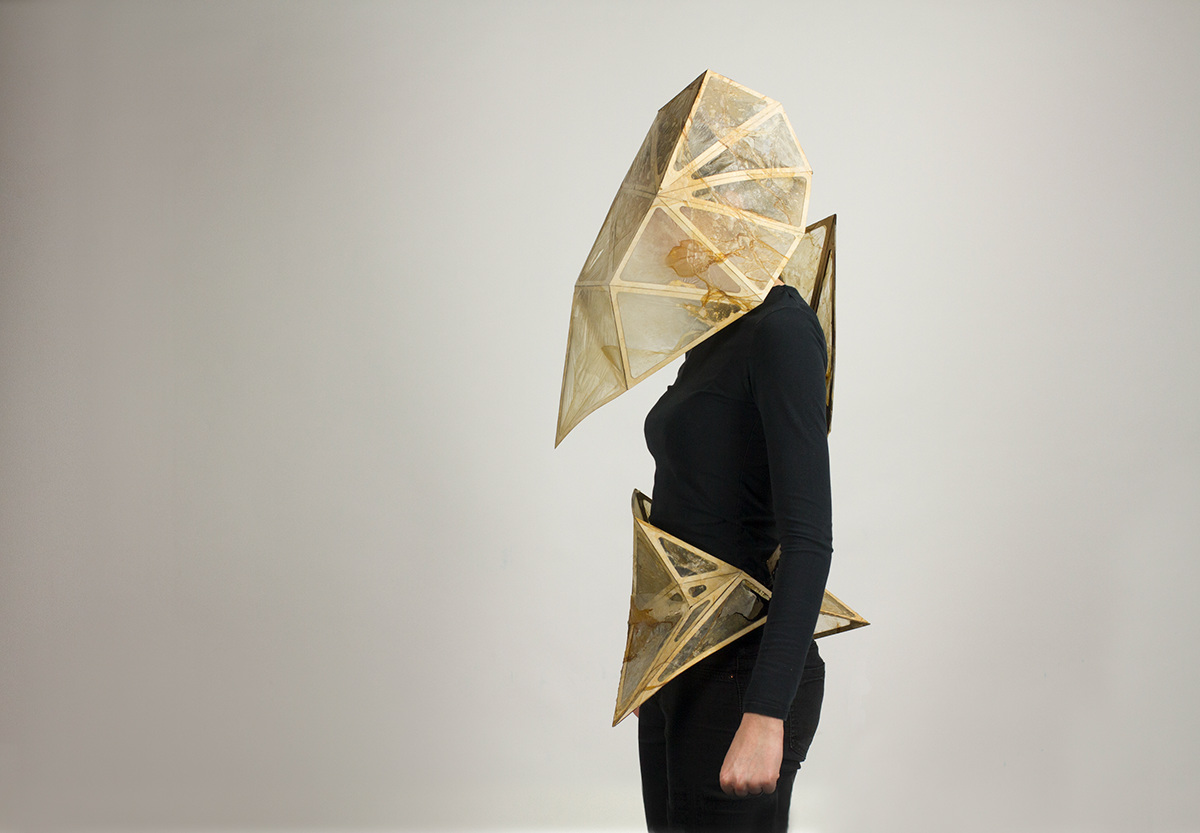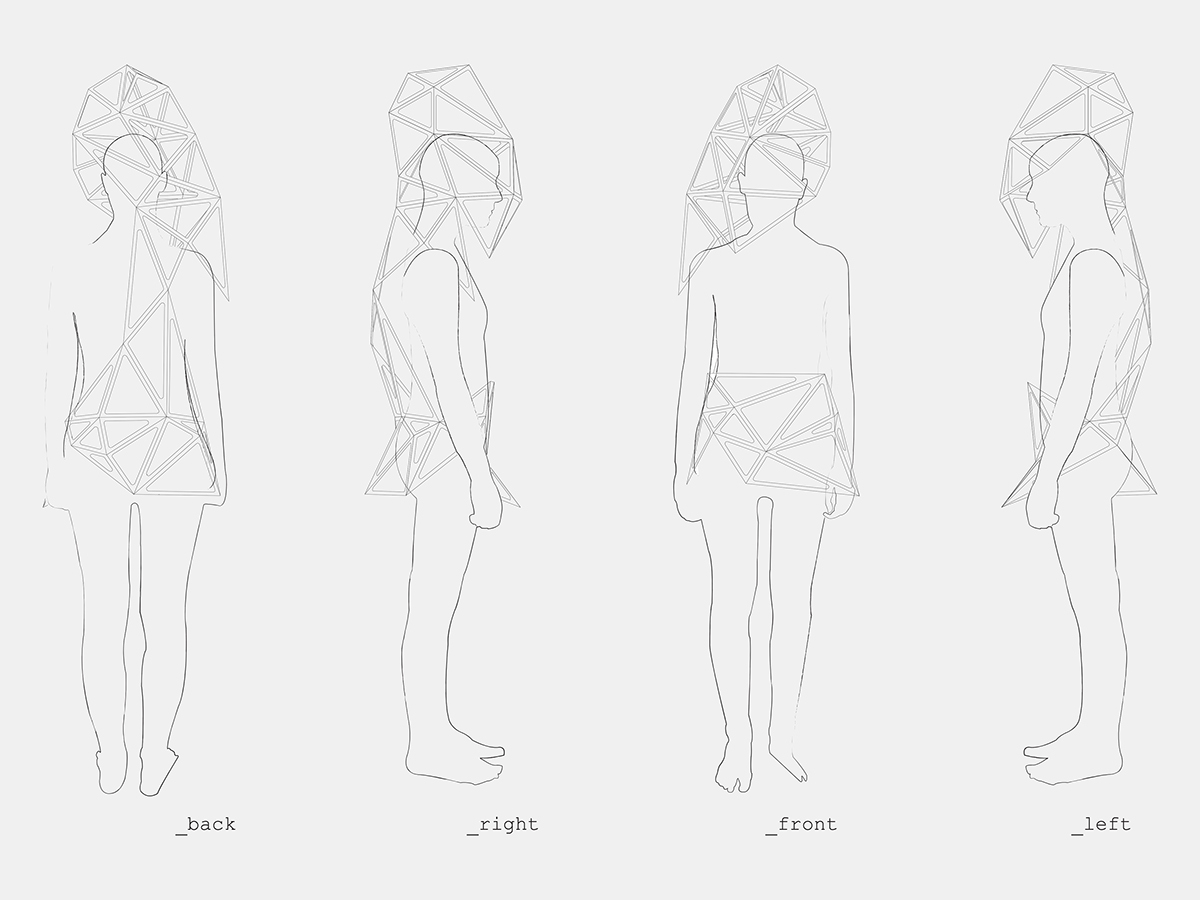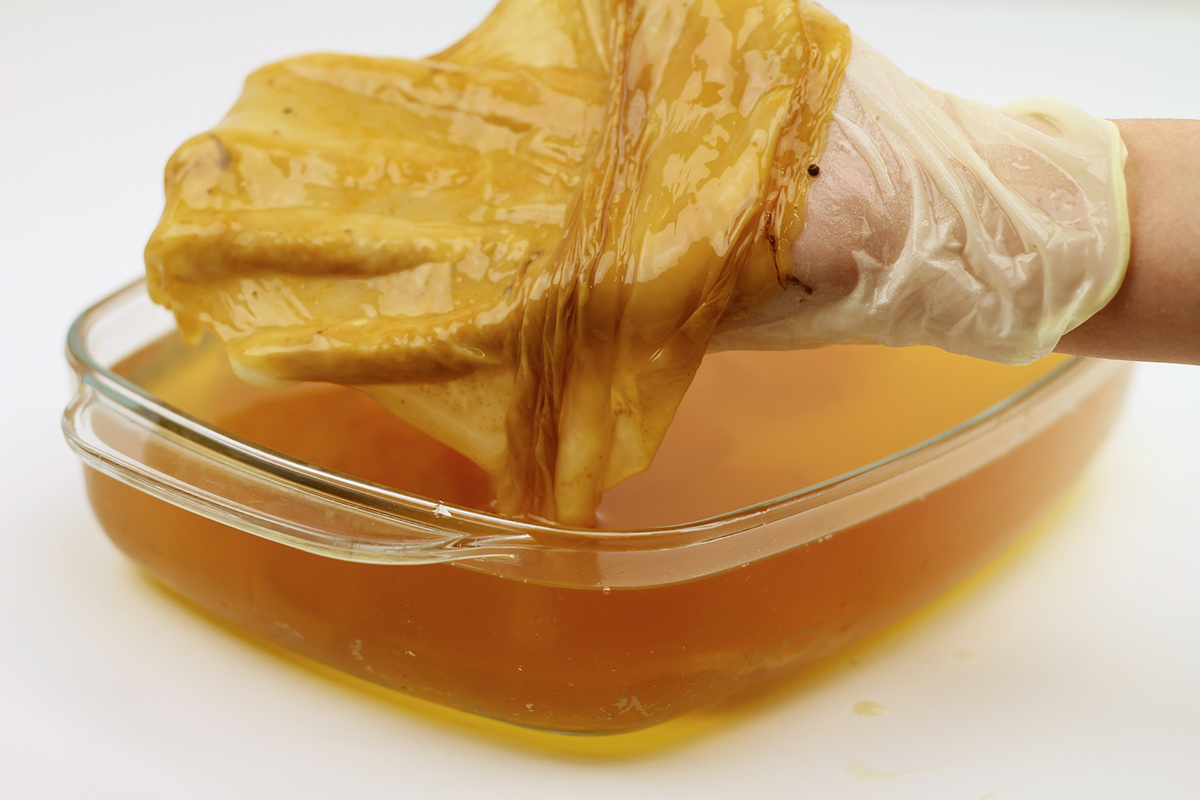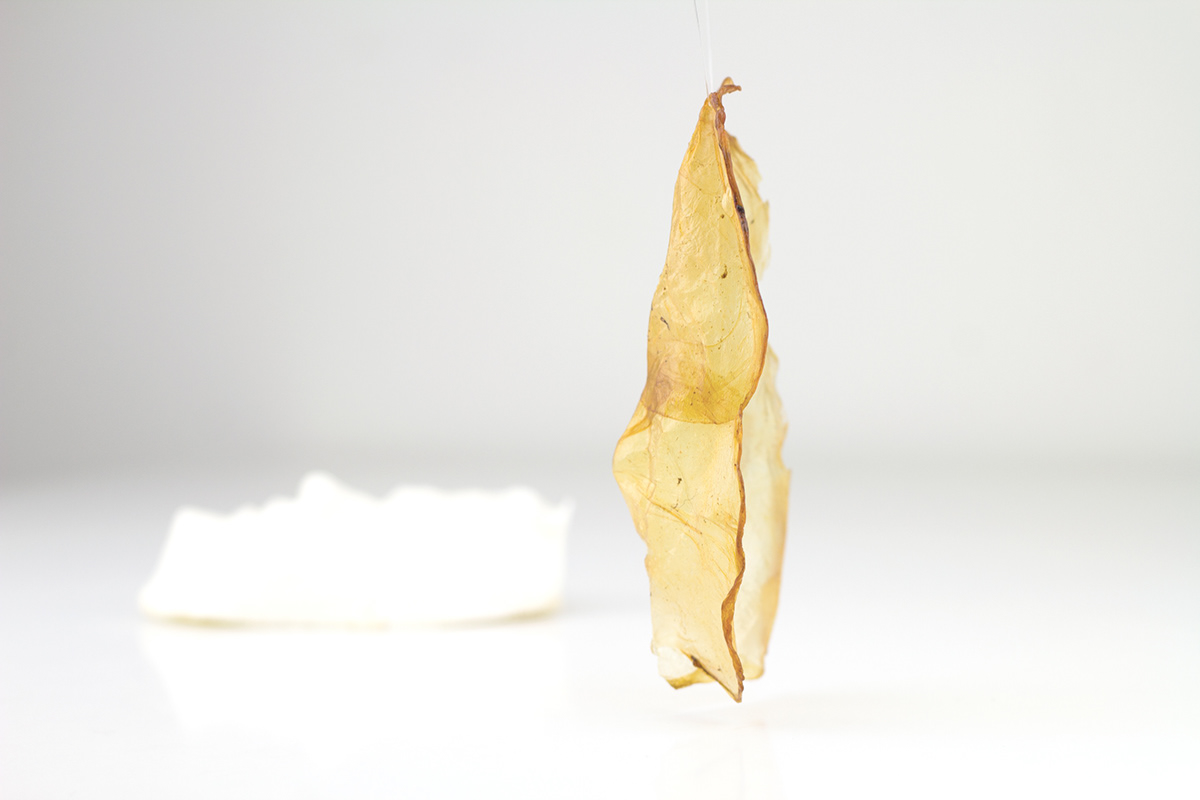
skin speculates on the potential of bio-materials and living organisms as forming part of the production process in the manufacture of physical objects and products. Digital manufacturing and rapid prototyping has greatly changed the way we think about not only production, but also the way we approach the entire creative process and the initial development of physical forms. Skin seeks to explore a way of integrating digital prototyping with biotechnology and experiments with the precision of computer generated forms versus the unpredictable nature of biological processes.

The project culminated in a wearable object inspired by animal bone corsets of the 17th and 18th centuries and the form was generated algorithmically using Grasshopper, a visual coding environment developed for Rhino architectural software. The algorithm used to generate the structure is a modified, three dimensional version of the Delaunay algorithm. The material itself is grown from acetobacter xylinum, a strain of bacteria that produces a microbial cellulose textile as it consumes glucose. It is a completely sustainable production method that requires no external energy input in order for the bacteria colonies to sustain themselves and produce the material. The process itself is more commonly known for the production of the Kombucha drink as has been pioneered by other designers including Suzanne Lee, Stefan Schwabe and Jannis Huelsen.






